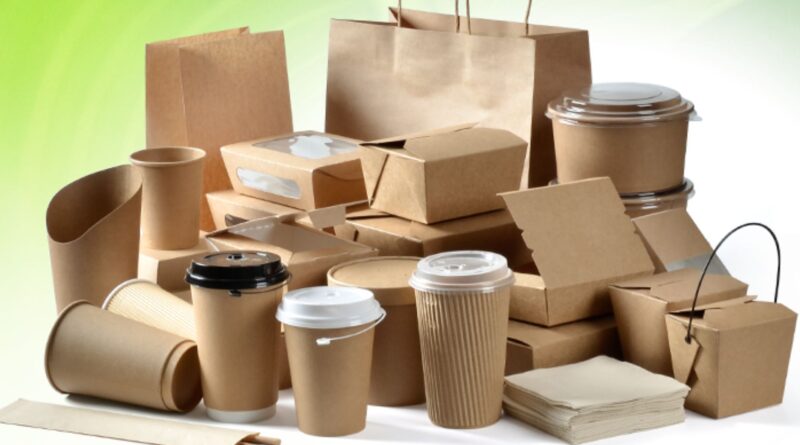The Ultimate Guide about Bagged Packaged Goods
Bagged packaged goods are a type of food product that is sealed in an airtight bag, and can be stored for an extended period of time. Bagged packaged goods are often shelf-stable and can be found in many places such as grocery stores, convenience stores, gas stations and vending machines.
Packaged goods are a key component of food safety. They are designed to prevent the spread of pathogens, which can cause food poisoning and disease.
Bagged packaged foods like bread, cereal, and rice are an important part of the food supply chain because they reduce the risk of cross-contamination and give consumers a greater sense of security. Packaged foods have been around since the 1800s when they were first used to contain meat and vegetables for preservation purposes.
Why bagged packaged goods are required
Bagged packaged goods are required for the safety of the food contents. The bags help in maintaining the freshness of the food and also controlling its weight by eliminating excess packaging material.
The need for bagged packaged goods is increasing with time due to rising concerns over quality, safety, and environmental issues as well as increasing demand from customers who have a preference for convenience.
Benefits of bagged packaged goods
Bagged packaged goods are beneficial for a number of reasons. They are convenient for consumers and help save on storage space. They also provide a better experience and taste to the food as they are not exposed to air and light.
Bagged packaged goods can also be more economical than bulk packaging. The cost of producing the bags is much lower than packaging in bulk, which means that they have less waste.
Ways of packaging the product?
This section discusses the different ways of packaging the product. It also discusses the importance of packaging in differentiating products from one another.
Packing is a process that helps to differentiate products from one another. It is important for a company to package its product in such a way that it will be easy to sell and make a profit. It includes many things such as designing, manufacturing, and marketing.
Packaging of bagged packaged goods?
Packaging is the process of enclosing or protecting an object so that it can be delivered to a person, place, or thing. Packing is done for many reasons, such as protection from damage during transit, ease in handling the object, and to make the object more appealing to consumers.
The types of packaging can vary depending on what type of product you are packaging. For example, if you are packaging food products like cereal boxes and crackers then you would use a corrugated cardboard box. If you were packaging electronics like laptop computers then you would use a plastic bag with foam inserts.
Procedure for packaging of bagged packaged goods
The procedure for packaging of bagged packaged goods is a step-by-step process that needs to be followed by everyone involved. There are rules and regulations that need to be followed in order to ensure the safety of the product and its quality.
The first step in this process is the product preparation, which includes making sure that all materials used are clean, dry and free from contaminants. The next step involves placing the product into a protective covering with a specific shape, size and weight requirements. The last step includes packing these bags into boxes or containers according to their specifications.
Blog Suggestion : What is 13377x Proxy Torrent Search Engine ?
The Pros and Cons of Bagged Packaged Goods.
Bagged packaged goods are typically cheaper than fresh produce, which is why they are so popular. However, the benefits of fresh produce come at a higher cost.
- Some of the benefits of bagged packaged goods include:
- They offer convenience for people who don’t have time to prepare food themselves or want to save money. They are also great for those who don’t have access to fresh produce or live in locations where it is difficult to get fresh produce.
- They help reduce food waste because they can be stored longer than fresh produce.
- They can be cheaper and more convenient than buying a whole bunch of vegetables from the store and then having to prepare them at home.
Some of the downsides include
- The nutrient content in bagged packaged goods is typically lower than that found in fresh produce because they lose nutrients as they sit on shelves waiting to be purchased, cooked, eaten and then finally discarded. This means that people
Conclusion
Packaged goods are products that are packaged in a container or package and sold to consumers. Packaged goods can be divided into three types: grocery, convenience, and specialty.
Grocers offer a wide range of food items and other household necessities. They stock groceries in bulk and offer them at low prices. Convenience stores carry a limited range of food items but offer them at lower prices than grocers do. Specialty stores carry a variety of merchandise that is not available at grocery or convenience stores, such as books, clothing, toys, or pet supplies.
Packaged goods are usually classified by the type of food they contain. For example, there are bagged chips, which typically contain potato chips or other types of snack food that is fried or baked. There are also bagged cereal products that have cereal inside the bag. These items may also come with milk or yogurt as part of the package.




